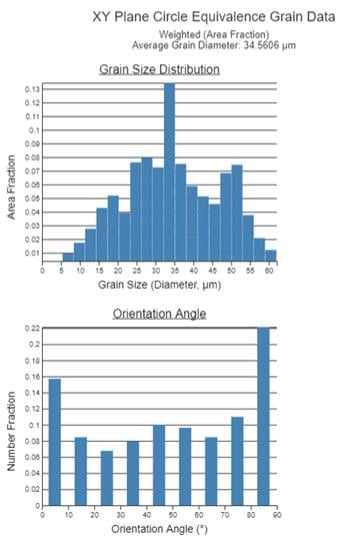-
-
September 6, 2019 at 9:23 pm
dingyangyao1995
SubscriberHello,
I was wondering how the Equivalent Circle Method is applied in the Additive Science Manual? Is the boundary of the grain calculated using some line integral to obtain the area and then use the area to calculate the diameter?
Thanks
-
October 16, 2019 at 3:58 am
Sandeep Medikonda
Ansys EmployeeHi, The details of the equivalent circle method are discussed here (Pages 9-11).
For each grain, the area and the area fraction of the total area are calculated. To do this, the diameter of an equivalent circle for each grain is calculated using the Circle Equivalence Method. Grain area and diameter values for all the grains are then aggregated.
-
October 17, 2019 at 5:29 pm
dingyangyao1995
SubscriberI already read through this part about the documentation. However, my question is how the Circle Equivalence Method is used. What are the equations used to transform the non-uniform area into a circle? how did you estimate the diameter or the circle? using Greene's theorem?
I guess my question would be what is the circle equivalence method.
-
October 17, 2019 at 8:37 pm
yizhang1
Ansys EmployeeIt is not as complicated as Greene's theorem.
In the background, the microstructure is calculated based on a structured grid (like voxels, but way smaller than that). The program will evaluate the area, A, of each grain based on how many grid it covers. And then it will be easy to evaluate the equivalent circle diameter, D, for this grain: A=PI(D/2)^2.
The purpose is to represent the size of a grain by one singe value, D, other than length, height...
-
- The topic ‘Additive Science – Microstructure Circle of Equivalence Method’ is closed to new replies.



-
3597
-
1283
-
1117
-
1068
-
983

© 2025 Copyright ANSYS, Inc. All rights reserved.









